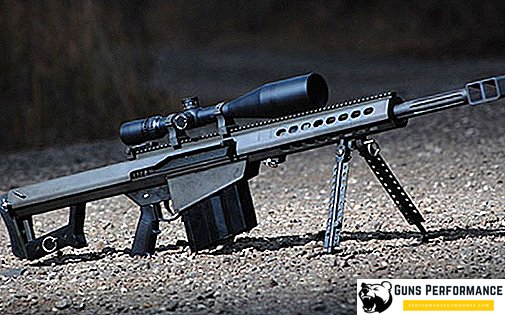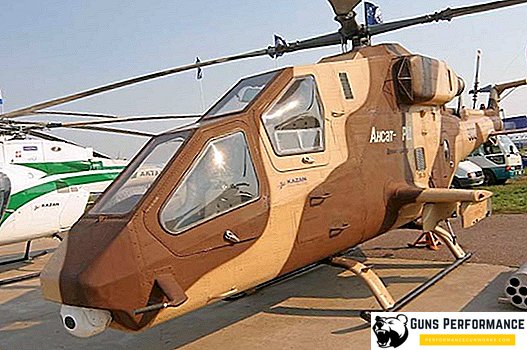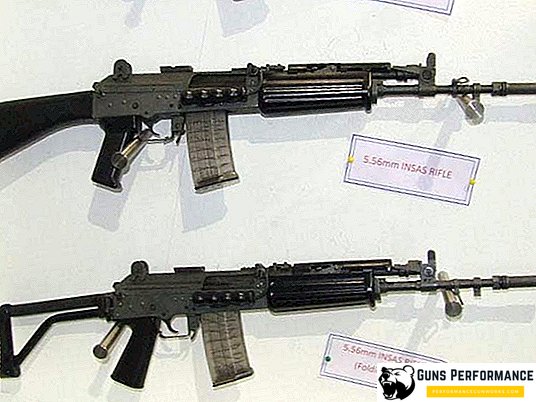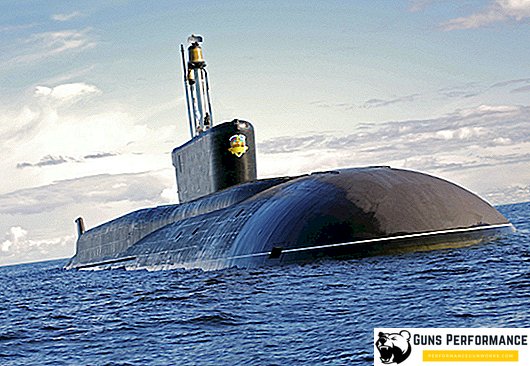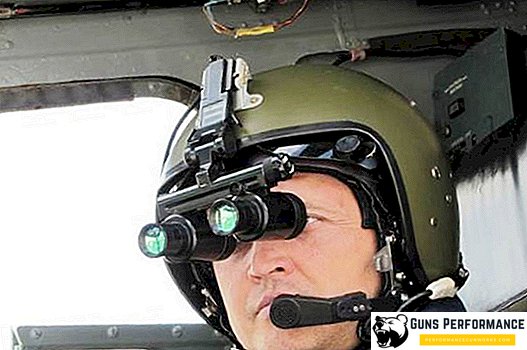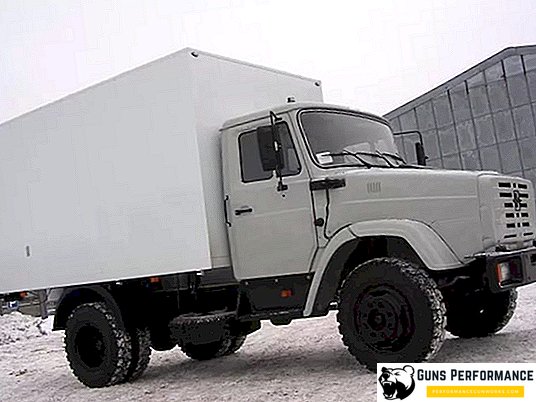The Navy is an effective geopolitical tool that allows the state to defend its interests far beyond its borders in various parts of the world. The American admiral Alfred Mahan wrote in his book, The Influence of Sea Power on History, that the naval forces (Navy) influence policy by the fact of their existence. In the 19th century, the borders of the British Empire were determined by the sides of its warships; in the last century, the US Navy became the main hegemon of the World Ocean. A similar situation persists today, most likely, that nothing will change in the coming decades.
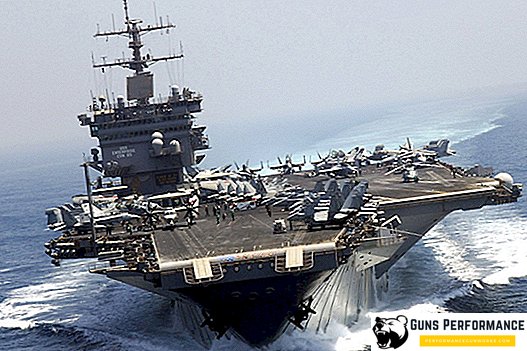
Currently, the United States has the most numerous navy on the planet. The US Navy includes the most aircraft carriers, the Americans have the most powerful submarine fleet and aircraft, their naval bases are scattered around the world. No country in the world can compare with the United States in terms of financing its naval forces. This is the main basis of this unprecedented power; other states simply cannot afford one-tenth of such expenses.
The Navy and strategic forces are the basis of America’s power, with the help of aircraft carriers, it solves its geopolitical issues around the world and, without embarrassment, uses the Navy in colonial "fights."

Today, the United States has the most powerful scientific and technical potential on the planet, which also works on the Navy. The government of the country finances dozens of programs aimed at increasing the combat capabilities, combat effectiveness and security of the fleet. New ships are launched annually, the fleet is equipped with the most modern types of weapons and military equipment.
After the end of the Cold War, the US fleet underwent a certain reduction, but at the beginning of this century it again began to increase - both in quantity and in quality.

US Navy History
The American navy is relatively young, its history began a little over two hundred years ago. In 1775, the Continental Congress decided to detach two small sailing ships to intercept British transports supplying the British colonial forces in the Americas.
Over the next three years of the war, the Americans created a small flotilla, the main task of which was "work" on the communications of the British. After the end of hostilities (in 1778), it was disbanded.
At the end of the 18th century, Algerian pirates who attacked American merchant ships became a major problem. To combat this problem in 1794, Congress passed the law on the creation of the Navy (Naval Act). Three years later, three frigates were launched, and in 1798 a separate ministry appeared that dealt with the affairs of the fleet.
The young fleet participated in several small campaigns, defended merchant ships from pirates, fought with the British and captured slave traders. The US Navy participated in the war with Mexico, ensuring the landing of the US Army on enemy territory.

During the Civil War, which lasted from 1861 to 1865, most of the American fleet joined the northerners, which largely determined the future of the North. Warships blockaded the southern ports. For the first time, armored steam ships, known as monitors, participated in this conflict. In 1862, the first battle took place between such armored ships.
After the end of the Civil War, the American fleet again fell into decay, and this situation began to change only by the 90s. The United States rapidly increased its economic power and became the strongest state in the western hemisphere. To advance their interests, they needed an effective tool - a powerful navy.
In 1898, the Americans defeated the Spaniards from the Philippines, and in the beginning of the 20th century adopted an ambitious program for the construction of new warships. In 1917, the US Navy entered World War I. In addition to participating in battles, the US Navy ensured the delivery of American troops to Europe.
At this time, the method of warfare at sea began to change rapidly: submarines and aircraft appeared, torpedo weapons improved, the first aircraft carriers were laid. Powerful battleships gradually faded into the past, their place was occupied by cruisers and destroyers.

The Second World War for the United States began with the attack of the Japanese on the base at Pearl Harbor, where all the battleships of the Pacific Fleet were destroyed, but the aircraft carriers managed to survive. In this conflict, the US Navy had to fight in two theaters of operations at once.

In the Atlantic, the American fleet had to patrol the convoys of transport ships and protect them from German submarines and aircraft, and in the Pacific Ocean - to conduct a classic maritime campaign against a very strong Japanese fleet. The US Navy participated in virtually all Allied landing operations in Europe and North Africa.
By the end of the war, the US Navy already had more than 80 aircraft carriers, most of which were converted from civilian ships. In 1955, the nuclear submarine Nautilus, the first such ship in the world, was launched. In 1961, the first nuclear-powered aircraft carrier in the world joined the American fleet.
During the Cold War, the main enemy of the US Navy was the Soviet fleet, which very quickly became a formidable enemy. The USSR had a numerous nuclear submarine fleet equipped with ballistic nuclear missiles. The fight against him has become the main task of the American military sailors.
The American fleet was at the forefront of the confrontation between the two superpowers. Warships and marines participated in the Vietnamese campaign, blocked Cuba during the Caribbean crisis, and landed troops on the Korean peninsula.
From about the 60s, the active development of the nuclear aircraft carrier fleet began. At first this program was criticized, but over time it fully justified itself. Today, aircraft carriers are the true masters of the seas. A large number of resources were also directed to the development of the submarine nuclear fleet. By the 1980s, the United States achieved parity with the USSR on submarines (both quantitative and qualitative).
The American Navy and the Marine Corps took part in all local conflicts of the second half of the last century.
In 2008, the number of personnel of the US Navy was 332 262 people, out of 51 thousand had an officer rank. The American fleet has many bases in different regions of the planet.

US Navy Structure
The US Navy is one of the five types of the country's armed forces. Their organizational structure has changed little over two hundred years of existence.
The US Navy is divided into two structural units: the navy and marines, each of which has a valid composition and reserve. At the same time, the marines (MP), although usually operating together with the navy, have their own command and structure. It is equated to a separate branch of the armed forces, and its commander is a member of the committee of chiefs of staff.
There is also the Coast Guard (ARM), which is part of the Department of Homeland Security, but during war or emergencies, it is reassigned to the leadership of the Navy.
There are several US Navy Command: US Navy Command (this is the former Atlantic Fleet), the Pacific Fleet, the European Navy and the Shipping Command.
Operationally, the US Navy is divided into six fleets: Second, Third, Fourth, Fifth, Sixth, Seventh.
Operational fleets are formed by combat and auxiliary ships and personnel on a rotational basis. The average rotation period is six months.

The commands of the forces of the fleet (we will call it the Atlantic Fleet) form the following fleets:
- Second fleet. Deployed to the north of the Atlantic;
- The fourth fleet. Deployed to the South Atlantic Ocean, the Caribbean;
- Sixth Fleet. His place of deployment is the Mediterranean.
The command of the Pacific Fleet forms the following operational fleets:
- Third. Place of deployment - the central and eastern Pacific;
- Fifth Fleet. Deployed in the Indian Ocean;
- Seventh fleet. Western Pacific.
Usually ships (including combat ones) are divided approximately equally between the Pacific and Atlantic fleets, but lately the Pacific Fleet (60%) has received more combat units. There is also the Tenth Fleet, which deals with issues of cyber warfare and defense against attacks in the virtual space. In its composition there are no ships and bases.
The US Navy is the highest authority of the state’s naval forces. It deals with the whole range of issues related to daily activities, supply, mobilization and demobilization, training and equipping the fleet. In addition, the Ministry develops programs for the development of the Navy, is engaged in the repair and modernization of ships, weapons and coastal facilities. In essence, the ministry is the main administrative body of the US Navy.
The functions and structure of the ministry of the US Navy have remained unchanged almost since its inception.
The main body that deals with the direct (operational) command of the American fleet is the headquarters of the Navy. His boss is the actual commander of the US Navy. It is he who is responsible for the resources allocated to him (material and human). The chief of staff of Naval Forces is the adviser to the president in questions of use of naval forces.
The composition of the headquarters of the Navy includes several departments, as well as four inter-fleet and ten coastal commands.

Combat composition of the US Navy
Today, the US Navy is the most numerous on the planet. In early 2013, it consisted of 597 ships of various types and classes:
- 11 nuclear aircraft carriers;
- 22 cruisers;
- 62 destroyers;
- 17 frigates;
- 3 corvettes;
- 14 nuclear submarines;
- 58 multipurpose submarines;
- 1 first class frigate;
- 14 landing ships;
- 17 helicopter carriers;
- 12 minesweepers.
To give an idea of the strength and multiplicity of the US Navy, we can cite the following fact. In 2009, the total displacement of the American fleet was thirteen times greater than the total displacement of all the other Navy, coming in the ranking after him.

In 2001, a new development program for the US Navy, Sea Power 21, was adopted. According to this program, the structure of the fleet and marines in the coming decades will be significantly strengthened. The number of strike groups will be increased from 19 to 36. By 2020, the US Navy will be 313 warships. Priority areas of this program are:
- support for the number of aircraft carrier groups at the level of eleven units;
- increase in the number of ships of the coastal zone;
- the construction of cruisers and destroyers of new species;
- building amphibious ships of new modifications.
US Navy submarine fleet
The fleet is responsible for one of the components of the nuclear triad - ballistic missile submarines (SSBNs). Today, the US Navy has 14 Ohio-class submarines, each carrying 24 Trident-2 missiles with eight warheads each. Submarines equally divided between the fleets - the Pacific and Atlantic. Of the fourteen submarine missile carriers, two are constantly on maintenance, and ten are on alert.
According to the START-1 agreement, four more similar submarines were converted to Tomahawk cruise missiles. Two submarines are in the Pacific Fleet and two are in service with the Atlantic.

The United States leads in the number of multipurpose submarines, the US Navy has them in its 53 units. The most perfect of them are MPLATRK type "Sea Wolfe", but there are only 3 units. The submarine construction program was frozen due to the extremely high price of these ships. It was originally planned to build 32 pieces. Instead of these ships are currently being built submarine type "Virginia". Their characteristics are somewhat more modest than those of the "Sea Wolfe", but they are also much cheaper. The Americans plan to build up to forty Virginia-type submarines.
Most American multipurpose submarines are Los Angeles-type submarines. They are considered obsolete, they are gradually written off.
All American MPLATRKs can fire torpedo tubes with Garpun anti-ship missiles and Tomahawk missiles.

US Navy Carrier Group
The real pride and symbol of the power of the American fleet are atomic aircraft carriers. Today, the US Navy has 11 Nimitz-class aircraft carriers. Five of them are in service with the Pacific Fleet, and six are of the Atlantic. In 2013, the aircraft carrier Gerald R. Ford, belonging to a new class of aircraft carrier ships, was introduced into the Pacific Fleet.
This aircraft carrier has a more perfect power plant, for its maintenance a smaller crew is needed, the steam catapult is replaced by an electromagnetic one. Compared with its predecessors, the operation of Ford will cost American taxpayers a lesser amount. It is planned to build three such ships.
A few more aircraft carriers are on conservation.
Carriers are the core of the carrier strike groups (AUG), which, in turn, are the main strike component of each of the operational fleets of the US Navy. One aircraft carrier is always on scheduled maintenance.
On each aircraft carrier posted wing. It consists of several squadrons of fighter-assault aircraft (from two to four), as well as DRLO aircraft (E-2C), EW aircraft, and control of the sea situation. Anti-submarine and attack helicopters are also based on the aircraft carrier.
On the aircraft carrier, as a rule, there are from 70 to 80 aircraft. Most of these aircraft and helicopters belong to the air forces of the respective fleets, but some of the aircraft are subordinate to the Marine Corps.
As a rule, four AUGs are at the same time in the sea: two for each of the fleets. However, it also happens that there is only one such connection in the sea.
Up to the mid-80s of the last century, most of the US Navy ships (destroyers, cruisers, frigates) played a supporting role in protecting the aircraft carrier in the AUG, but then the situation changed somewhat. The Aegis control system was adopted, which significantly increased the combat role of destroyers, cruisers and frigates. "Aegis" allows you to detect and destroy (in the air, on land and at sea) various targets at long distances. The ships received the Mk41 vertical launch (UOP) installation, which has 32 or 64 cells to accommodate anti-aircraft ("Standard"), cruise ("Tomahawk") or anti-submarine (Asrok) missiles.
After that, the cruisers and destroyers were able not only to launch missile strikes on land with the help of Tomahawks, but also to provide cover (air defense and missile defense) for land and ship groups. If earlier the main strike vehicle of the US Navy was combat aircraft from aircraft carriers, now a cruiser and a destroyer can inflict a massive strike on the enemy force.

Currently, the US Navy includes 22 Taykonderoga-class cruisers, twelve of which are listed as part of the Pacific Fleet, and ten - of the Atlantic. Each such cruiser is equipped with the Aegis system and two installations of the Mk41 with 61 missile cells each.
A few years ago, the construction of new CG (X) cruisers was launched, which, according to the plan of the American naval commanders, should replace the "Taykonderoga." However, it is not known whether funding will be allocated for this project.

The main ship of the US surface fleet is a destroyer of the type "Arly Burke". Today, the American fleet has 62 such ships, the last of which was put into service in 2012. 27 destroyers are part of the Atlantic fleet, 35 - Pacific. The construction program of these ships is far from complete, only 75-100 destroyers are planned to be launched. Each of these ships has the Aegis system, the Mk41 launcher and can carry about 90 missiles. 22 destroyers have the Aegis system capable of performing missile defense tasks.
A new Zumwalt destroyer construction program is being implemented, which has a very futuristic appearance due to the use of stealth technology. "Zumvalty" have very high combat and technical characteristics, but this project is much criticized because of its high cost. It was originally planned to build 32 such ships, but so far only three have been planned.

The destroyers "Zumvalt" differ not only in their appearance, they also plan to install new weapons systems operating on innovative physical principles, in particular the railgun, on these ships. That is why the destroyers are equipped with a very powerful (for ships of this class) power plant. Каждый эсминец имеет пусковую установку Мк41 и способен нести до 80 ракет.
Фрегаты в американском флоте представлены кораблями типа "Оливер Перри". Многие эксперты называют этот корабль самым неудачным за послевоенный период. Сейчас в строю 15 таких кораблей, еще 16 находятся в резерве. Эти фрегаты, скорее всего, в ближайшие годы будут выведены из состава флота.
На сегодняшний день корветы являются самыми распространенными боевыми кораблями во всех флотах мира - но только не в американском. Их разработка и строительство началось только в нынешнем столетии. Это корабли, способные эффективно действовать в прибрежной зоне. Сегодня в США реализуются два проекта корветов: "Фридом" и "Индепенденс". Построено два корабля "Фридом" и один "Индепенденс". Американское военное руководство пока не может сделать выбор в пользу одного из них.
Планируется построить 55 кораблей, но скорее всего, и эта программа будет урезана - корабли очень дорого стоят.
В настоящее время Америка располагает самым мощным в мире флотом десантных судов. ВМС США имеет в своем составе несколько видов десантных кораблей. Самыми крупными являются универсальные десантные корабли, еще есть вертолетно-десантные суда и десантные транспорты-доки.
Тральщики ВМС США представлены кораблями типа "Авенджер". Все они базируются на Тихом океане.
Авиация ВМС США
Одной из основных ударных сил американского флота является авиация. Кроме истребительно-штурмовых функций, она выполняет еще и множество других.
Флотская авиация имеет весьма сложную структуру управления и подчинения. Она состоит из двух групп: авиация флота и авиация Корпуса морской пехоты.
Часть самолетов ВМС США находится на базе хранения Дэвис-Монтан.

Основным боевым самолетом американского флота и Корпуса морской пехоты является F/А-18 "Хорнет". Его последние модификации (Е и F) имеют весьма высокие характеристики, это практически новый самолет ("Супер Хорнет"), а машины ранних серий (А, В, С) постепенно переводят в Дэвис-Монтан. Сегодня на вооружении авиации ВМС находится примерно 1 тыс. самолетов F/А-18, еще сотня хранится в Дэвис-Монтане.

Вторым по численности является самолет AV-8 "Харриер". Этот британский самолет производится в США по лицензии, им вооружен Корпус морской пехоты. Американцы несколько модернизировали эту машину, сегодня ВМС США располагают 138 единицами "Харриера".
В дальнейшем "Харриеры" планируют заменить самолетами пятого поколения F-35, но пока эта программа идет с сильным отставанием от намеченного графика. КМП поставлено 27 F-35В, авиации флота - всего шесть F-35C.
Самым современным американским противолодочным самолетом является Р-8А "Посейдон", пока их принято на вооружение 19 единиц. В дальнейшем они полностью заменят легендарные "Орионы". Всего планируется построить 117 "Посейдонов".
Основным самолетом радиоэлектронной борьбы является ЕА-18G. Сегодня на вооружении сотня таких самолетов, их количество увеличится до 117 единиц.
Основным палубным самолетом ДРЛО является Е-2С "Хокай", в наличии имеется 61 подобная машина.

На вооружении ВМС США есть конвертоплан MV-22В "Оспрей", который может садиться на палубу авианосца. Эта машина является своеобразным гибридом самолета и вертолета, она может взлетать вертикально и лететь со скоростью самолета. Сейчас на вооружении находятся 184 конвертоплана.
Также на вооружении флота стоят вертолеты АН-1W/Z "Кобра", несколько сот вертолетов Н-60 "Блэк Хок", более двухсот транспортных вертолетов Н-53, включая 56 вертолетов-тральщиков.
Корпус морской пехоты состоит из четырех дивизий, по две на каждый флот. На вооружении морских пехотинцев числятся 447 танк "Абрамс", более 4 тыс. БМП, 1,5 тыс. орудий, РСЗО, противотанковые комплексы, ЗРК. КМП превосходит по своей мощи большинство современных европейских армий.


